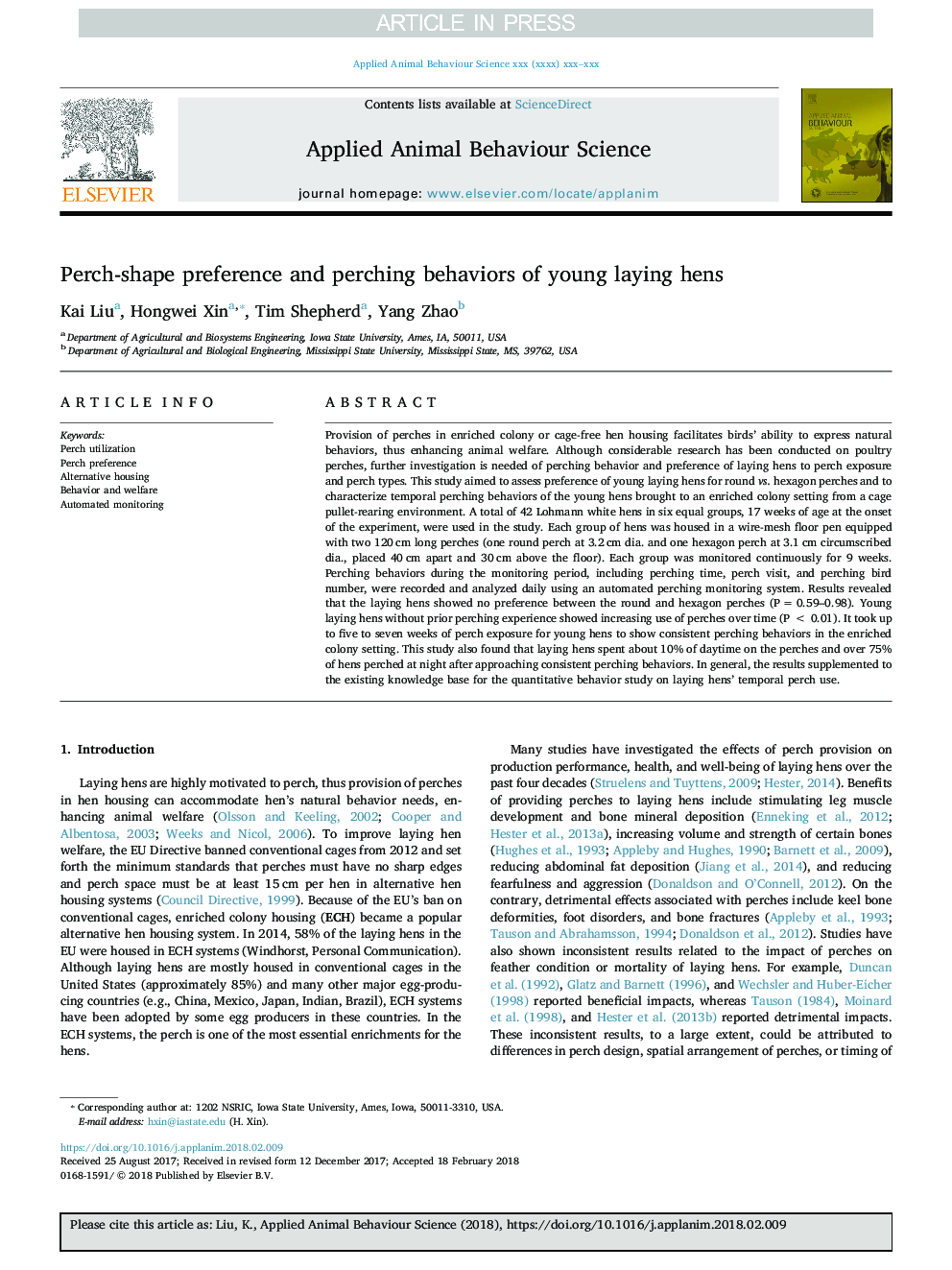| کد مقاله | کد نشریه | سال انتشار | مقاله انگلیسی | نسخه تمام متن |
|---|---|---|---|---|
| 8882772 | 1625303 | 2018 | 8 صفحه PDF | دانلود رایگان |
عنوان انگلیسی مقاله ISI
Perch-shape preference and perching behaviors of young laying hens
ترجمه فارسی عنوان
اولویت شکل پرچ و رفتار پرچم مرغ های جوان تخم
دانلود مقاله + سفارش ترجمه
دانلود مقاله ISI انگلیسی
رایگان برای ایرانیان
کلمات کلیدی
استفاده از پرچم، اولویت صحیح، جایگزین مسکن، رفتار و رفاه، نظارت خودکار،
موضوعات مرتبط
علوم زیستی و بیوفناوری
علوم کشاورزی و بیولوژیک
علوم دامی و جانورشناسی
چکیده انگلیسی
Provision of perches in enriched colony or cage-free hen housing facilitates birds' ability to express natural behaviors, thus enhancing animal welfare. Although considerable research has been conducted on poultry perches, further investigation is needed of perching behavior and preference of laying hens to perch exposure and perch types. This study aimed to assess preference of young laying hens for round vs. hexagon perches and to characterize temporal perching behaviors of the young hens brought to an enriched colony setting from a cage pullet-rearing environment. A total of 42 Lohmann white hens in six equal groups, 17 weeks of age at the onset of the experiment, were used in the study. Each group of hens was housed in a wire-mesh floor pen equipped with two 120â¯cm long perches (one round perch at 3.2â¯cm dia. and one hexagon perch at 3.1â¯cm circumscribed dia., placed 40â¯cm apart and 30â¯cm above the floor). Each group was monitored continuously for 9 weeks. Perching behaviors during the monitoring period, including perching time, perch visit, and perching bird number, were recorded and analyzed daily using an automated perching monitoring system. Results revealed that the laying hens showed no preference between the round and hexagon perches (Pâ¯=â¯0.59-0.98). Young laying hens without prior perching experience showed increasing use of perches over time (Pâ¯<â¯0.01). It took up to five to seven weeks of perch exposure for young hens to show consistent perching behaviors in the enriched colony setting. This study also found that laying hens spent about 10% of daytime on the perches and over 75% of hens perched at night after approaching consistent perching behaviors. In general, the results supplemented to the existing knowledge base for the quantitative behavior study on laying hens' temporal perch use.
ناشر
Database: Elsevier - ScienceDirect (ساینس دایرکت)
Journal: Applied Animal Behaviour Science - Volume 203, June 2018, Pages 34-41
Journal: Applied Animal Behaviour Science - Volume 203, June 2018, Pages 34-41
نویسندگان
Kai Liu, Hongwei Xin, Tim Shepherd, Yang Zhao,
